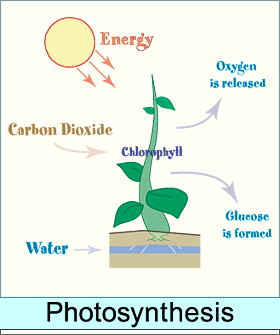Photosynthesis

 |
Photosynthesis is a process in which green plants use energy from the sun to transform water, carbon dioxide, and minerals into oxygen and organic compounds. It is one example of how people and plants are dependent on each other in sustaining life.
Photosynthesis happens when water is absorbed by the roots of green plants and is carried to the leaves by the xylem, and carbon dioxide is obtained from air that enters the leaves through the stomata and diffuses to the cells containing chlorophyll. The green pigment chlorophyll is uniquely capable of converting the active energy of light into a latent form that can be stored (in food) and used when needed.
Photosynthesis provides us with most of the oxygen we need in order to breathe. We, in turn, exhale the carbon dioxide needed by plants. Plants are also crucial to human life because we rely on them as a source of food for ourselves and for the animals that we eat.
